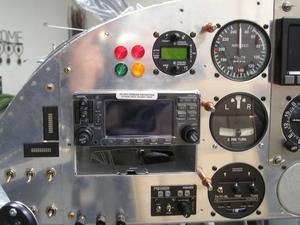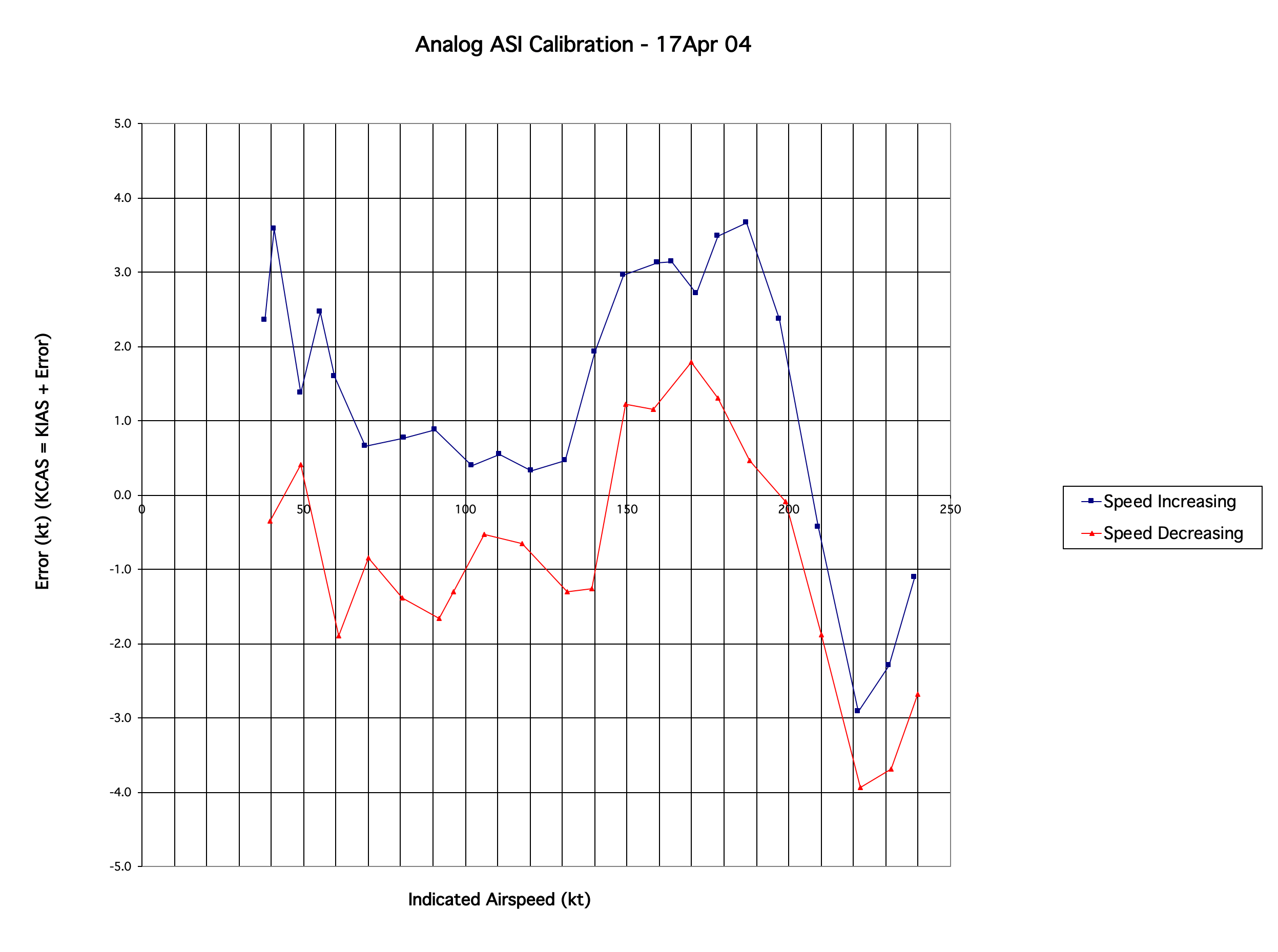I've been working on a bunch of different stuff over the last two weeks:
Flight Test Data - I ordered a Keyspan 4-port USB to serial adapter, and it arrived about 10 days ago. It allows me to get the data from the Dynon EFIS, Grand Rapids Engine Monitor and the Garmin GPS into a laptop. I started messing around writing a Perl script to record EFIS data. If I only wanted to get data from the EFIS, I could just record it with a terminal program, but I want to get data from two or three different things, and I want to be able to time-sync the different data streams. In other words, if I see something of interest in one data stream, I want to be able to identify when it occurred, so I can see what the data from the other boxes shows at that time. I have a tendency to become focused on some things, so I ended up spending much of the Easter long weekend pounding away at my computer keyboard, writing an debugging the Perl script. I finally had an Eureka moment and got it working. I'll attack the scripts for the engine monitor and GPS later.
 Annunciator Lights - I finally drilled the holes for the four round LED annunciator lights. I didn't have a lot of extra room to play with, and I wanted to be sure to get them perfectly lined up. I did a lot of head scratching, and finally realized that I should make a template. That way I could guarantee that the holes ended up where I wanted. The lights mount from the cockpit side of the instrument panel, so I needed a way to disconnect them - I've soldered wires on them that go to knife splices. I haven't yet run the wires from the aircraft to the lights.
Annunciator Lights - I finally drilled the holes for the four round LED annunciator lights. I didn't have a lot of extra room to play with, and I wanted to be sure to get them perfectly lined up. I did a lot of head scratching, and finally realized that I should make a template. That way I could guarantee that the holes ended up where I wanted. The lights mount from the cockpit side of the instrument panel, so I needed a way to disconnect them - I've soldered wires on them that go to knife splices. I haven't yet run the wires from the aircraft to the lights.
Airspeed Indicator Calibration - Airspeed indicators always have some error, and a knowledge of that error is essential if you want to be able to sort out the static system position error using a speed-course flight test technique. A lot of people don't bother figuring out what the static system position error is, but I plan to fly IFR, and the static system position error affects the accuracy of the altimeter, so I will do the required testing.
The first step is to calibrate the airspeed indicator. I made a water manometer from a piece of 3/8" clear vinyl tubing, as described on the EAA Chapter 1000 website.
 I gathered data from about 40 kt to 240 kt with the speed increasing between each data point, and then reversed the process with the speed decreasing between each data point. You can see how the friction in the analog airspeed indicator produced some hysteresis. I'll assume that the vibration from the engine will remove the hysteresis in flight, so I'll use the average of the two lines when I use this calibration data.
I gathered data from about 40 kt to 240 kt with the speed increasing between each data point, and then reversed the process with the speed decreasing between each data point. You can see how the friction in the analog airspeed indicator produced some hysteresis. I'll assume that the vibration from the engine will remove the hysteresis in flight, so I'll use the average of the two lines when I use this calibration data.
The ASI reads a bit low at low speed, is quite accurate from about 70 kt to 130 kt, reads up to 3 kt low from about 150 kt to 200 kt, and reads high above 200 kt.
 I was somewhat surprised to see some apparent hysteresis in the EFIS airspeed as well. The EFIS airspeed was more accurate than the analog ASI, but it has some small errors. I also checked the data that was transmitted by the EFIS, and it seemed to compare well to the values displayed on the EFIS, although there was a bit of noise in the data, and I should have recorded a longer burst of data at each point. I'll probably repeat this part of the calibration later.
I was somewhat surprised to see some apparent hysteresis in the EFIS airspeed as well. The EFIS airspeed was more accurate than the analog ASI, but it has some small errors. I also checked the data that was transmitted by the EFIS, and it seemed to compare well to the values displayed on the EFIS, although there was a bit of noise in the data, and I should have recorded a longer burst of data at each point. I'll probably repeat this part of the calibration later.